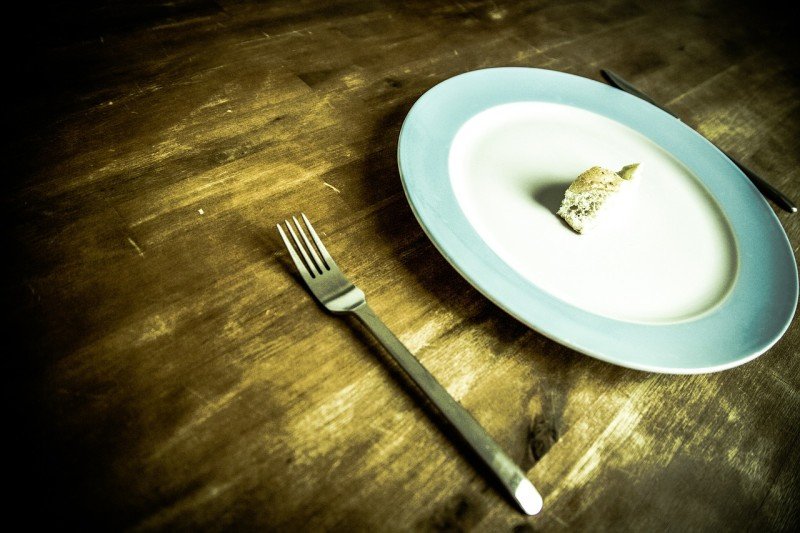 I realize that the normal thing would be to wait until actually finishing a book before writing a review, but I so enjoyed reading as far as page 198 of 447 of Dan Barber’s The Third Plate: Field Notes on the Future of Food, plus Evelyn Tribole (co-author of Intuitive Eating) recently mentioned (during and online training I was doing with her) being impressed by Barber in an episode of the Netflix docu-series “The Chef’s Table.” And then last week I started watching the videos from the New York Times-sponsored Food for Tomorrow conference, which takes place at the Stone Barns Center for Food and Agriculture, which as it turns out is also the site one of Barber’s Blue Hill restaurants. I felt like the stars were aligned, or something.
I realize that the normal thing would be to wait until actually finishing a book before writing a review, but I so enjoyed reading as far as page 198 of 447 of Dan Barber’s The Third Plate: Field Notes on the Future of Food, plus Evelyn Tribole (co-author of Intuitive Eating) recently mentioned (during and online training I was doing with her) being impressed by Barber in an episode of the Netflix docu-series “The Chef’s Table.” And then last week I started watching the videos from the New York Times-sponsored Food for Tomorrow conference, which takes place at the Stone Barns Center for Food and Agriculture, which as it turns out is also the site one of Barber’s Blue Hill restaurants. I felt like the stars were aligned, or something.
Barber’s book is divided into four sections (six if you count the lovely introduction and epilogue): Soil, Land, Sea and Seed. I’ve made it through Soil and Land so far, and what I’ve learned about the failures of modern agriculture and the glories of jamon iberico de bellota (cured ham that comes from Spain’s free-range, acorn-fed Iberian pigs) and natural foie gras (yes, there is such a thing), has kept me glued to the page. [I was especially interested in these last two bits since I tasted both foie gras and jamon iberico for the first, and only, time at a phenomenal dinner I went to last fall.]
So what is the “third plate”? Well, the first plate is what you might think of as the Standard American Diet: A large cut of meat with few vegetables. The second plate is an improvement, with meat from free-range animals and locally sourced vegetables, but still awfully similar to the first plate, and similarly hard on the environment. The third plate, Barber says, is “where good farming and good food intersect.” It integrates vegetable, grain and livestock production in a way that could redefine nutrition, agriculture and taste. Indeed!
A few highlights from the first half of the book:
- The bran and the germ portion of wheat make up only 20 percent of the wheat kernel, but 80 percent of the nutrition and 100 percent of the flavor. When we started removing the bran and germ to make refined white flour from just the endosperm, we “killed” wheat.
- Annual wheat (which is grown in modern agriculture) has puny root systems and must be fed by farmers because it can’t feed itself. Perennial wheat, on the other hand, has deep, robust root systems and can fend for itself. The change from perennial grasses and crops to annual wheat lead to the tragic Dust Bowl of the 1930s, and loss of up to 75 percent of the topsoil in the Great Plains. [I need to re-read The Grapes of Wrath.] Emmer wheat (a type of farro, which is one of my favorite grains), is an ancient wheat that has large root systems, providing good yield with out needing much fertilizing.
- The breaking away from sustainable agriculture began as early as colonial times, when settlers who had no prior experience with farming would deplete their farm land then just move on to “virgin” land, often cutting down forests in the process.
- “The fact that a farmer can make more money feeding animals than feeding people is a problem with the marketplace.”
- “Food’s flavor depends on soil health.” Chemical farming and “bad” organic farming “kills soil by starving it of its complex and riotous community of anything good to eat.”
- Phytonutrients not only have benefits for health [including anti-inflammatory and anti-cancer properties], but they are the building blocks for flavor compounds. [This means the healthiest produce is also the tastiest!!!]
If you care at all–or are worried at all–about the quality of your food today and the future of your food tomorrow, I highly recommend this book. I can’t wait to read Sea and Seed, especially since it looks like Seed goes into more depth about ancient grains.
I stumbled upon this 2008 TED Taste3 conference where Dan Barber talked about a foie gras parable. Watch it!
Disclosure: This post contains Amazon Affiliate links. If you purchase one of the books I link to on Amazon after clicking ont eh embedded link, I will earn a minuscule commission.






